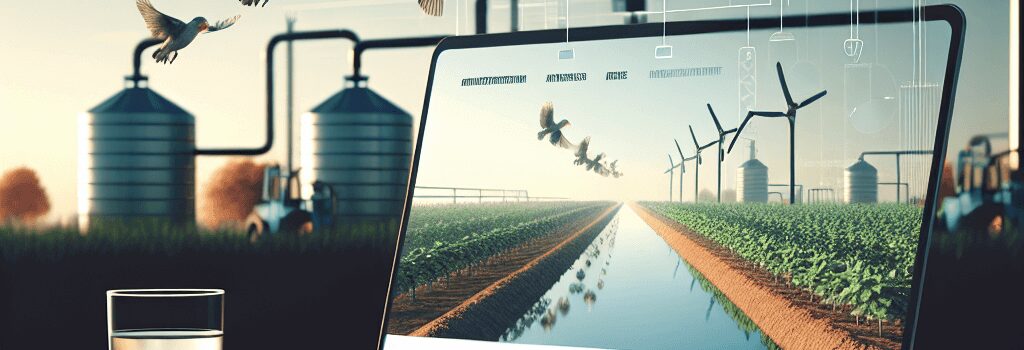Farmers’ Tech Approach to Save Water-Loving Birds

Introduction
Waterbirds undertake long-distance migrations every year, stopping at critical wetlands to rest and refuel. Modern agricultural landscapes often lack suitable refueling spots, and loss of wetlands has led to declining populations of species such as sandpipers, ducks and herons. By adopting bird-friendly farming practices—backed by precision technologies, IoT sensors, and targeted policy incentives—farmers can transform working lands into vital seasonal pit stops for these migratory species.
Implementing Bird-Friendly Agriculture
1. Seasonal Flood Pulse Management
Creating temporary inundation zones mimics natural flood pulses. Farmers can use programmable irrigation controllers (for example, the AquaLogic AL-4000 with RS-485 connectivity) to schedule controlled floods on rotational fields. Key technical specs:
- Pump capacity: 1,500 L/min
- Flood duration: Programmable intervals from 12 hours to 7 days
- Telemetry: LoRaWAN modules for real-time water-level monitoring
2. Riparian Buffer and Vegetation Zoning
Establishing 10–20 m wide vegetative strips along irrigation canals and ditches filters agrochemicals and provides cover. Native grass species like Phalaris arundinacea and Lythrum salicaria are recommended by ornithologists for their seed yield and shelter. Benefits include:
- Reduction of nitrogen and phosphorus runoff by up to 65% (USDA NRCS data).
- Provision of invertebrate-rich foraging grounds.
- Enhanced soil stability and microclimate regulation.
Leveraging IoT and Remote Sensing
Precision agriculture tools are vital for optimizing field conditions without overburdening resources.
- LPWAN Soil Sensors: LoRaWAN-enabled moisture probes (e.g., Sentek EnviroScan) report soil saturation at 10 cm intervals, accuracy ±2%.
- UAV Multispectral Imaging: Drones equipped with 5-band multispectral cameras (e.g., MicaSense RedEdge-MX) generate NDWI (Normalized Difference Water Index) maps to identify ephemeral pond formation.
- Satellite Remote Sensing: Sentinel-2 data (10 m resolution) can track wetland area changes seasonally.
Expert Perspectives
“Integrating low-cost water sensors with cloud-based analytics platforms allows farmers to precisely mimic natural wet-dry cycles,” says Dr. Amanda Liu, an eco-hydrologist at the University of California. “This approach benefits both crop production and migratory birds.”
Case Study: Precision Agriculture in California’s Central Valley
A consortium of 50 growers implemented a decentralized management network combining Arduino-based water controllers with AWS IoT Core. Over two seasons, they recorded:
- 30% reduction in irrigation water use.
- Registered visits from 12 species of shorebirds, including the threatened American avocet.
- Improved soil organic matter by 8% in managed zones.
Policy Frameworks and Incentives
National and regional programs offer cost-share and technical assistance:
- USDA Wetland Reserve Easement: Up to 50% reimbursement for wetland restoration equipment.
- EU Common Agricultural Policy: Agri-environment schemes reward farmers for maintaining temporary ponds.
- Private Conservation Credits: Trading platforms that monetize biodiversity gains.
Emerging Trends in Agri-Tech
Innovation continues to bring new tools for bird-friendly farming:
AI-Driven Water Management Models
Machine learning models (built with TensorFlow 2.8) predict optimal flood schedules. A recurrent neural network trained on 5 years of weather and soil data achieved an RMSE of 0.12 m in water-level forecasts, enabling automated valve control via MQTT messaging protocols.
Biotelemetry and Wildlife Monitoring
Lightweight GPS trackers (under 5 g) with solar recharge modules now offer up to 18 months of continuous tracking. Data ingested into cloud platforms (Azure IoT Hub) feeds real-time migration maps for scientists and land managers.
Conclusion
By combining traditional conservation measures with state-of-the-art agri-tech, farmers can turn their fields into essential refuges for migrating waterbirds. Strategic planning, supported by IoT sensors, AI models, and smart policy incentives, ensures sustainable agriculture and thriving avian populations for generations to come.